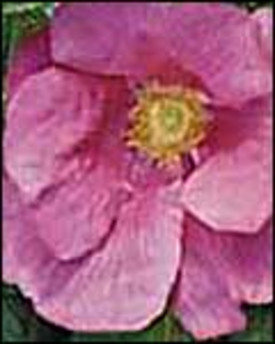The following rose varieties are notable for their vigor, adaptability, and disease resistance. If you’ve shied away from growing roses in the past, consider giving one of these a try!
 |
Frau Dagmar Hastrup Shrub Rose Frau Dagmar Hastrup is a bush rose that’s hardy in USDA zones 4 to 9. It grows to 5 feet tall and grows well in moist, well-drained soils. This trouble-free roses produces large, silvery-pink blooms throughout the summer that turn into bright red hips in the fall. The bright green foliage is glossy, disease-resistant, and deeply veined. It blooms in June and will repeat bloom sporadically through the summer.
|
|
 |
Carefree Beauty Shrub Rose
This tough shrub rose grows well in USDA zones 4-9 and is adapted to moist, yet well-drained soil conditions. It grows about 36 inches tall and equally as wide. Carefree Beauty produces delicate clusters of semi-double rose pink blooms starting in June and will continue flowering throughout the summer. The fragrance is pronounced and sweet. Orange hips can be expected in the fall.
|
|
 |
Madame Hardy Antique Rose
Madame Hardy is a once blooming antique rose that’s hardy in USDA zone 4-10 and grows best in moist, well drained soil. With its strongly scented blooms of delicate white, Mme. Hardy is one of the most popular of the old garden roses. Despite the moderately thorned canes, it should find a place in the spring bouquet. Hardy was the director of the Jardins de Luxembourg in Paris. The rose commemorates his wife.
|
|
 |
Nearly Wild Shrub Rose
Nearly Wild is hardy in USDA zones 4 to 9. It grows to 4 feet tall and is tough as nails. An absolute favorite of gardeners in the north, Nearly Wild produces delicate single-petaled blooms of rose pink. The fragrance is noticeable to many and slight to others. A very attractive specimen for bedding. It’s field-grown on its own roots for winter hardiness. It blooms in June in most areas and will rebloom later in summer.
|
|
 |
La France Antique Rose An important specimen in the history of the rose, La France has been designated as the first Hybrid Tea. La France acquired a hardy and vigorous nature from the Hybrid Perpetuals and a refined shape and free-flowering habit from the Teas. The silvery pink blooms are moderately scented. Though La France was introduced in 1867, Hybrid Teas were not recognized in France as a group distinct from the Hybrid Perpetuals until 1884. Ours is the genuine La France—acquired directly from Guillot in France. It blooms repeatedly. La France is hardy in USDA zone 4-9 and can grow to 4 feet tall.
|
Credit: National Gardening Association




























